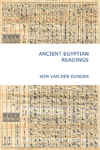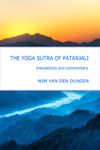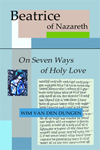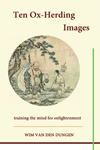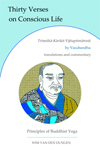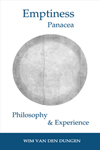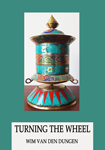|

Studies
in
Buddhadharma
"No error exists in our
knowledge, if it completely agrees with the laws of our understanding, nor
can there be an error in a representation of the senses, because they
involve no judgment, and no power of nature can, of its own accord,
deviate from its own laws. Therefore neither the understanding by itself
(without the influence of another cause), nor the senses by themselves
could ever err." - Kant :
Critique of Pure Reason, A292.
"If two philosophers agree, one is not a philosopher.
If two saints disagree, one is not a saint."
Tibetan saying
"I am not a partisan of Buddha.
I do not hate Kapila and the others.
I hold as a teacher only
Him whose word possesses reason."
Śamkarapati : Praise of the Supra-Divine.
Let us adopt a format
consistent with and inspired by the Tibetan "Ri-mé" approach.
"Ri" or "chik-ri" means "one-sided" or "sectarian" and "mé" is "no", the
negation. So Ri-mé means "not taking sides" or nonpartisan.
One of the
unique features of the Buddhadharma is accepting that for different people
different paths are appropriate. The 84.000 Dharma Doors are so many instructions
guiding all kinds of people to awakening. All vehicles, schools & lineages
practice the teachings of the Buddha and so aim at liberation or awakening.
What do they share ? The Four Noble Truths, the Eightfold Path, the Two Truths
(First Turning), Compassion, Emptiness (Second Turning) and Buddha-nature (Third
Turning). Add to this Tantra (Fourth Turning).
When different schools practice in isolated environments, without much contact
between them, sectarism and prejudice may rise, as was the case in Tibet between Kagyupas &
Gelugpas. But even today, tensions are present between the Lesser & Greater
Vehicles, as well as between Sutric & Tantric methods or between the Vajrayâna and Zen. Even within the Vajrayâna, different
views emerge (between idealist & realists, between other-empty and self-empty).
Nevertheless, basically, the Buddhadharma is one. Despite their
differences, these various vehicles, schools & lineages are of "one taste". This must be the highest
understanding, and it does not preclude criticism. In relation to what is
unclear in lower views, higher views do not undermine lower views. The Greater
Vehicle does not deny the Lesser Vehicle. Tantra does not repudiate Sûtra.
Higher views, in order to clarify their tenets, may criticize lower views, but
not without accepting lower views do have their valid application, albeit
limited by place, time & person.
As mentioned, unity does not mean radical differences do not occur. For
example. The blatant tension between Rangtong & Shentong Mâdhyamaka, i.e. the
definition of emptiness as either self-empty (without inherent existence) or other-empty
(deplete of stains). Even today, these differences lead to heated debates. If both positions are taken at face value, a
contradiction is clearly present. Focusing on this, we ask : Is Rangtong correct
or is Shentong correct ? It seems both cannot be true !
But let us probe the
intent behind these conflicting views. On the one hand, Rangtong
fears to posit Buddha-nature a priori because this may lead to
misunderstanding this nature as an "âtman", an eternal, substantial entity.
This would annul the enterprise of de-reification.
Thus, only a Buddha-potential is accepted, and the qualities of Buddhahood are
deemed generated, by way of emptiness meditations, a posteriori.
On the other hand, Shentong fears a mere conceptual understanding of emptiness
(as in Rangtong) may lead to nihilism, the idea Buddhahood is a mere void, a
nothingness, something ineffable and therefore unteachable ! Although nothing is
substantial, something does exist. It also fears one cannot explain, in a rationally satisfying way,
how enlightened Buddha-qualities may be "generated" by way of these
emptiness meditations of a sentient being.
Once these intentions grasped, the difference may be understood
as follows : to dissolve concepts Rangtong is best (i.e. before the actual
"seeing" of emptiness) and to describe the actual
experiential content of Bodhi-mind, Shentong is best (i.e. after the higher
stages of consciousness are a given) ! Philosophy
(conceptual) and experience (non-conceptual, nondual cognition) have to be
distinguished. The former prepares the mind, purifies it and silences all
conceptual elaboration. This is "dark" emptiness, merely lacking inherent
existence. The latter is an immediate entry into the direct one-moment
("ekaksana") experience of being selflessly present in luminous emptiness,
free of the stains of reification. This is a
nonpartisan solution.
Your Guides :
 Table of Contents
Table of Contents
 Buddhadharma SiteMap
Buddhadharma SiteMap
 Other
External SiteMaps Other
External SiteMaps
 Follow the Guide
Follow the Guide
|

 Other
External SiteMaps
Other
External SiteMaps
